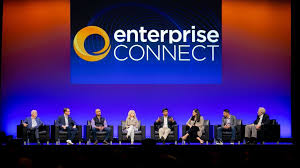Introducing Use-Case Onboarding: Implement new use-cases faster

Time to read: 3 minutes
Accelerate your time-to-value with detailed step-by-step walkthroughs
Implementing any SaaS solution comes with the perennial questions of, “How easy is it to implement this?” or, “How long does it take?” and, “When can I start to see the business value from the software I bought?” CDPs are no exception to this maxim, and the uncertainty around the time it takes to achieve value could even be a major hindrance to adoption, no matter how much the final product benefits the overall business. To that end, we’re excited to introduce Use-Case Onboarding -- a new in-app experience that streamlines the process of setting up new use-cases in Segment.
Really, it’s even easier and faster to set up Segment now!
Use-Case Onboarding is a step-by-step walkthrough that guides you to implement your first use-case with Segment from start to finish. When you log into a Segment workspace with Use-Case Onboarding enabled, you’ll be greeted by a welcome screen that’ll ask you to select your role, business role, and targeted use-case. Once you’ve completed that, you’ll be taken to a tailored checklist that will tell you exactly what you’ll need to do to implement the desired use-case.
The best part is that Use-Case Onboarding utilizes Segment’s best practices, based on our experience working with thousands of customers. By following the steps in the walkthrough as prescribed, you’ll be creating a sustainable and resilient implementation that is far less likely to require fixes later down the line, saving your engineering team time and maintenance costs.
With our new guided setup, it’s much easier to know exactly where to start and how to achieve your goals – ultimately reducing implementation time and cost.
What use-cases are supported?
Glad you asked! Use-Case Onboarding supports the most common use-cases aligned to the essential business goals that you want to achieve with your CDP. If you’re part of the Segment Community, these are the same use-cases as listed in the Use Case Library. Specific examples include:
-
Build high value lookalikes
Build lookalikes for app install
Increase signups with lookalikes
Mitigate cart abandonment
Mitigate high value churn
Suppress based on time
Suppress with purchase
-
Accelerate app install
Accelerate onboarding
Accelerate signup
Acquire paid subscriptions
Convert trials to paid subscriptions
Mitigate cart abandonment
Boost retention, upsell, and cross-sell
Build high value lookalikes
Increase repeat purchases
Mitigate high value churn
Nurture with content
Personalize upsell content
Personalize winback
Personalize communications and product experiences
Accelerate onboarding
Increase repeat purchases
Mitigate high value churn
Nurture with content
Personalize upsell content
Personalize winback
Anything else I should keep in mind?
Use-Case Onboarding is designed to streamline implementation as much as possible, but there’s still a few human elements to keep in mind before you begin. To ensure a successful onboarding experience, here’s some tips:
Define the stakeholders who’ll be involved in the implementation. As much as Use-Case Onboarding is designed to streamline the technical aspects of the process, it still takes a team to make a successful implementation. At the center of every successful CDP implementation is a core group of stakeholders across multiple teams who together align on a unified, standard vision and data model for the entire organization. For more guidance, the Use Case Library features an excellent tutorial about defining which stakeholders should be responsible for the implementation.
Identify which use-cases you want to prioritize first before opening your Segment workspace. While Use-Case Onboarding tells you how to implement use-cases, which use-case to select depends on the unique factors affecting your business. We recommend starting with what your objectives are as a whole company, then breaking that down into team goals and deciding what metrics are used to measure success to arrive at the use case that your team will prioritize. We recommend checking out the free Implementation Planning course in Segment University for a more detailed breakdown.
Tackle one use-case at a time. Segment is chock-full of amazing features that bring tremendous value to businesses. However, with so many useful capabilities, it can be tempting to try and implement all of your business objectives at the same time. Focusing on one use-case at a time with Use-Case Onboarding benefits your implementation in the long run as it results in a more resilient implementation that minimizes the propensity for issues down the line, as well as actually achieving a faster time-to-value with incremental wins.
Awesome! How do I get started?
Use-Case Onboarding is now available in GA for both new and current Business Tier customers.
For further support, check out our free Segment Community where you can get all of your questions answered by Segment experts, as well as a plethora of free resources, courses, and certifications. We also offer free certifications for all Segment users, such as the Segment Implementation and Segment Certified Marketer certifications that can be completed alongside your journey with Use-Case Onboarding.
We can’t wait to see what you build with Segment!
Related Posts
Related Resources
Twilio Docs
From APIs to SDKs to sample apps
API reference documentation, SDKs, helper libraries, quickstarts, and tutorials for your language and platform.
Resource Center
The latest ebooks, industry reports, and webinars
Learn from customer engagement experts to improve your own communication.
Ahoy
Twilio's developer community hub
Best practices, code samples, and inspiration to build communications and digital engagement experiences.


